Introduction: Ideal lens to complement the 18-55mm
The Nikon AF-S DX 55-200mm f/4-5.6G ED VR II (Nikon 55-200mm f/4-5.6 II) is an affordable variable-aperture telephoto zoom lens for photographers shooting with Nikon APS-C DSLRs such as the D5300 or D3300. Taking into account the 1.5x “crop factor” of Nikon APS-C DSLRs, this equates to an equivalent 82.5-300mm focal length, which is a versatile range for a variety of subjects, including portraits, sports, wildlife, or simply filling the frame with subjects in the far distance. Updated from the initial 2005 version, Nikon’s latest incarnation adds image stabilization (VR) as well as full time manual focus override to a lens that’s just fractionally longer and heavier than its predecessor.
Just 83mm in length with the barrel retracted, and 300 grams in weight, the Nikon 55-200mm f/4-5.6 II remains a compact and light-weight optic that ensures good balance and handling on smaller entry-level DSLRs, such as Nikon D3000 or D5000 series cameras. The new 4-stop VR system allows photographers to capture sharper images with slower shutter speeds, which is particularly useful at the long end of the focal range, where the maximum f/5.6 aperture reduces the amount of light hitting the sensor.
The Nikon 55-200mm f/4-5.6 II also offers full autofocus on all Nikon APS-C DSLRs, thanks to the lens’s built-in autofocus motor, making it a good choice for photographers shooting with the D3300 or other DSLRs that don’t include an in-camera autofocus motor. Full-time manual focus override enables quick switching between MF and AF without having to disengage the motor, and the lens’s internal focusing system also ensures that the front element doesn’t rotate during operation. As you zoom, the lens barrel extends in length a little, but can also be locked in its retracted position to avoid zoom creep while you’re on the move, with a lock release button on the lens.
Let’s take a look at the analyzed DxOMark lens metrics for the new Nikon 55-200mm f/4-5.6 II to see how it performs.
Key specifications:
- Nikon DX (APS-C) lens mount
- Equivalent 82.5-300mm focal length
- Maximum aperture f/4-5.6
- 4-stop image stabilization (VR)
- Minimum focus distance 1.1m
- Maximum reproduction ratio 0.23x
- 52mm filter thread
- Size 70.5 x 83mm retracted (D x L)
- Weight 300g
Measurement: Improved resolution at 200mm
The Nikon 55-200mm f/4-5.6 II achieves a high overall DxOMark score of 18 points tested on the 24Mp D5300 and D7100 DSLRs, dropping to a low of 8 points on older 12Mp models such as the D200, D70, and D40x. Thanks to improved overall sharpness, the Nikon 55-200mm f/4-5.6 II ranks as the highest-scoring Nikon DX-mount telephoto zoom in its class, just ahead of the alternative Nikon 55-200mm f/4-5.6G ED and Nikon 55-200mm f/4-5.6G IF-ED options.
The Nikon 55-200mm f/4-5.6 II’s sharpness P-Mpix map indicates good resolution between 8 and 10 P-Mpix at all focal lengths between 55-200mm using the lens’s wider aperture settings up to f/8. Using narrower apertures between f/11 to f/22, there’s a noticeable reduction in resolution, which drops to around 1 P-Mpix at f/22, as indicated by the red areas on the map.
The Nikon 55-200mm f/4-5.6 II offers the greatest light transmission of around 4.8 TStop at the wider focal lengths up to 135mm, which goes down by almost 2 stops to 6.8 TStop at 200mm, reducing the amount of light available for the viewfinder and the autofocus system.
Distortion is reasonably well-controlled throughout the focal range, with only minor barrel distortion between 55-80mm, and pincushion distortion evident between 80-200mm, but neither is significant, and as you’d expect for a lens covering this focal range, the Nikon 55-200mm f/4-5.6 II keeps lines reasonably straight. Vignetting (corner shading) isn’t an issue at any focal length using apertures between f/5.6 to f/22, and while the heaviest vignetting of –1Ev occurs at wider apertures, it’s easily corrected in post-production if required. Chromatic aberration (fringing) is also well-controlled at focal lengths between 70 and 135mm, with some minor fringing evident in the corners of the frame when shooting at the widest or longest focal lengths at some apertures.
Nikon 55-200mm f/4-5.6G ED VR II vs. Nikon 55-200mm f/4-5.6G IF-ED vs. Nikon 55-200mm f/4-5.6G ED
Nikon offers three very similar DX-mount telephoto zoom lenses covering the 55-200mm focal length, including the 55-200mm f/4-5.6G IF-ED, the 55-200mm f/4-5.6G ED, and the latest 55-200mm f/4-5.6 II. All three feature the same variable f/4-5.6 maximum aperture, AF-S (SWM) autofocus motor, 52mm filter thread, and as Nikon G-type lenses, aperture control via the camera body only, with no manual aperture ring.
The latest 55-200mm f/4-5.6 II versions add image stabilization (VR) and full-time manual focus override in a lens that’s just slighting longer (83mm when retracted) and 100g heavier than the Mark I. The extra weight can be attributed to the inclusion of VR, but this version remains shorter and lighter than the 55-200mm f/4-5.6G IF-ED, which also features VR.
With an overall DxOMark score of 18 points, the latest Nikon 55-200mm f/4-5.6 II lens ranks ahead of the older Nikon competition on our database, thanks to its improved sharpness. Our lab testing identifies very comparable lens metrics for transmission, distortion, vignetting, and chromatic aberration among the three lenses, with minor differences among the scores translating to limited impacts on real-world results.
Sharpness results are more significant, however, with the latest 55-200mm f/4-5.6 II version boasting an increased overall sharpness score of 11 P-Mpix, compared to 9 and 8 P-Mpix for the competition. This was predominantly achieved by its improved resolution at the long end of the focal range, with sharper results at 200mm f/5.6 compared to the older lenses. For sports, action, or wildlife photography, this is an important setting on a lens of this type, and Nikon obviously paid close attention to improving sharpness at this setting. The lens achieved strong resolution of around 70% acutance in the center of the frame at 200mm f/5.6, dropping just slightly to around 60% in the outer field. Closing down one stop to f/8 at full zoom increases resolution further, and the Nikon 55-200mm f/4-5.6 II offers something approaching homogenous sharpness around 70% across the frame at this setting, which is a significant improvement on the competition. There’s also a slight improvement at 200mm f/11, but here the new lens is much more comparable to the resolution of its predecessors, so it’s really at the wider aperture settings at 200mm where the new lens offers an advantage.
Conclusion: Extra features at a great price
With a recommended retail price of $350, but listed on B&H Photo for just $147, the new Nikon 55-200mm f/4-5.6 II is a very attractively-priced DX telephoto zoom for APS-C shooters. The addition of image stabilization (VR) and full-time manual focus override are worthwhile upgrades that make Nikon’s latest variable-aperture DX telephoto zoom more relevant in the current market.
The 4-stop VR system is particularly useful for a lens of this type, enabling sharper shots of relatively static subjects using slower shutter speeds around 1/30 sec at 200mm. VR is less effective for shooting quick action sports or wildlife, however, for which you need fast shutter speeds to prevent blurry shots. For such subjects, the f/5.6 maximum aperture and 6.8 TStop light transmission at 200mm mean that you’re going to need pretty good light to achieve the shutter speeds required, as well as enough available light for responsive autofocus performance. That’s the case with all variable-aperture zooms in this price bracket, however, and Nikon should be applauded for making significant improvements to sharpness at 200mm on the Nikon 55-200mm f/4-5.6 II, which was a weak point in previous versions. So with improved sharpness, additional features, and a price tag as cheap as its predecessor’s (if you can pick it up discounted), the new 55-200mm f/4-5.6 II DX mount telephoto zoom is a win-win option for Nikon APS-C shooters looking for an affordable telephoto zoom lens.


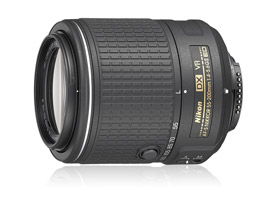


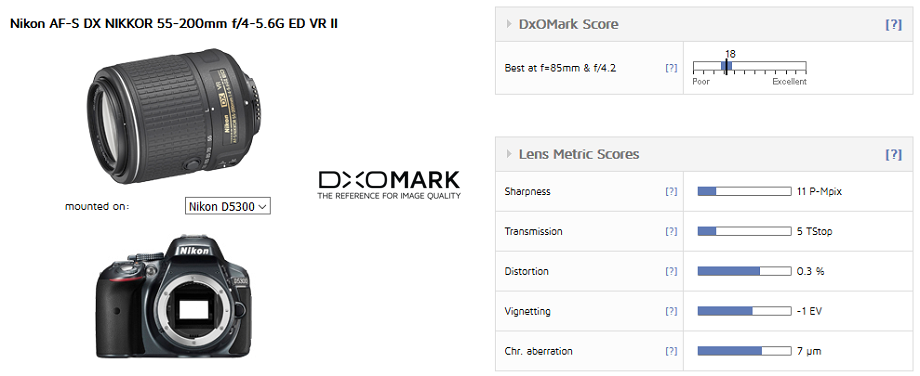

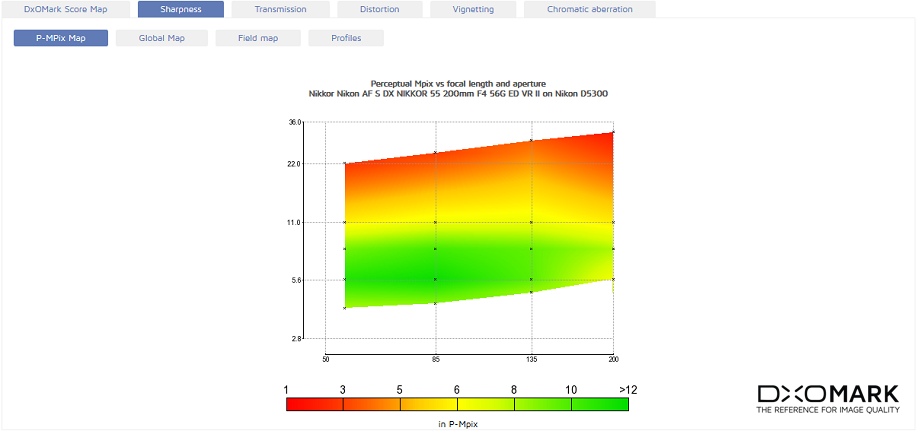
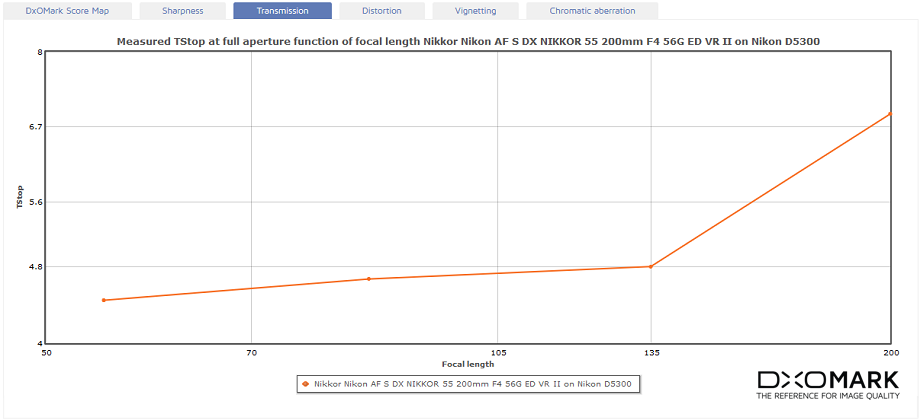
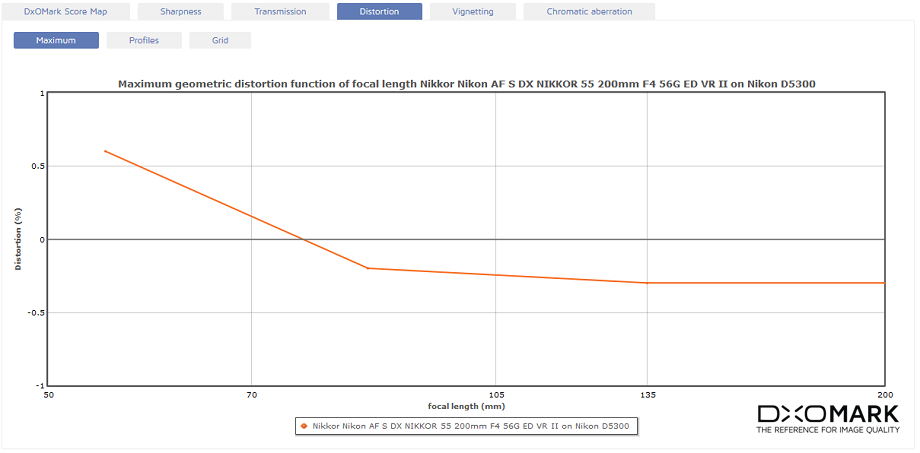
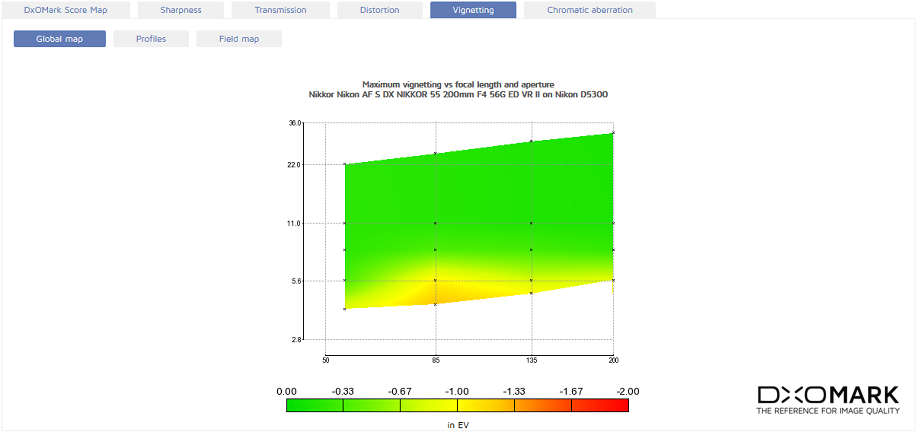
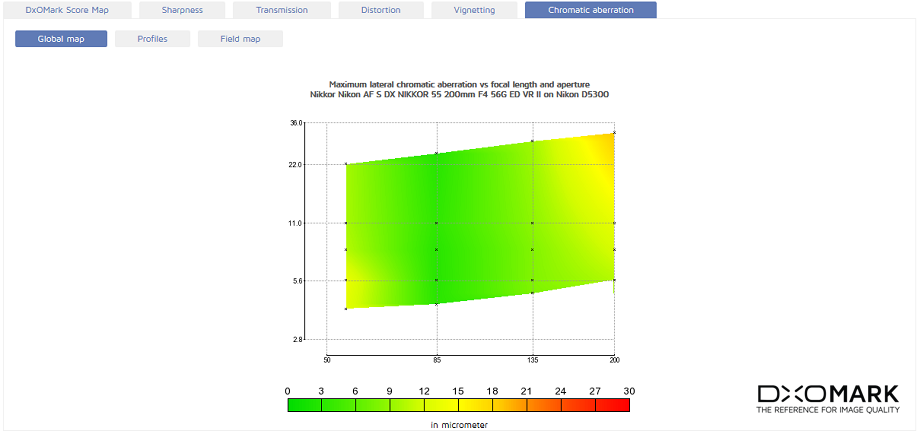
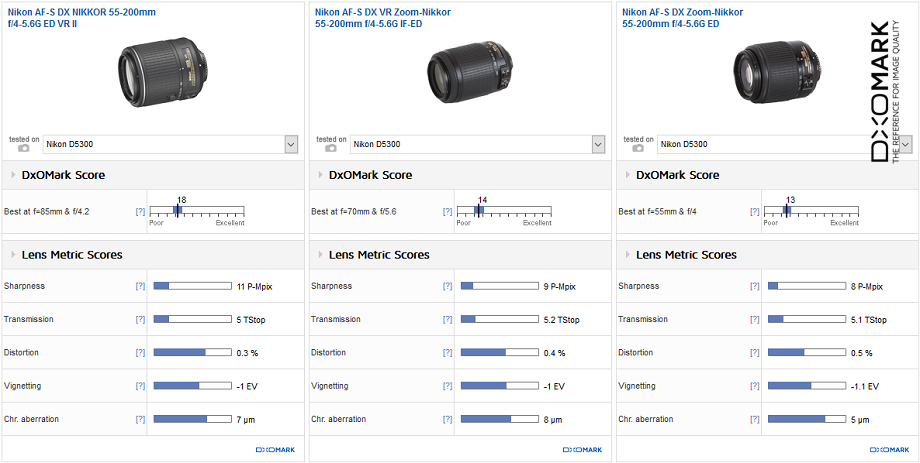
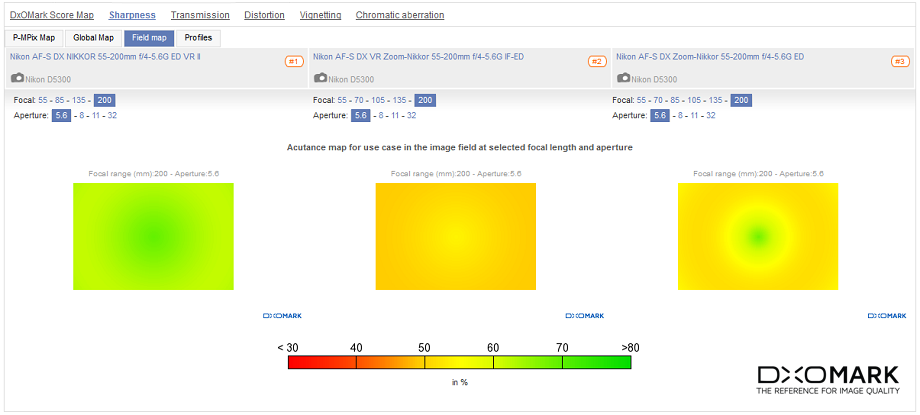
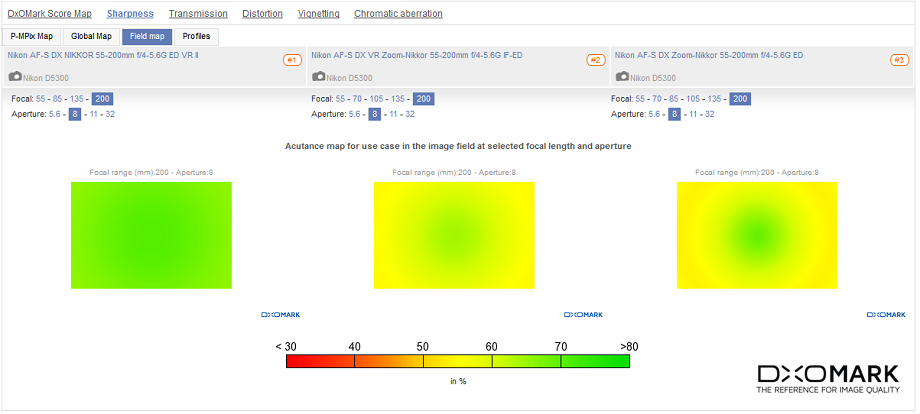
DXOMARK encourages its readers to share comments on the articles. To read or post comments, Disqus cookies are required. Change your Cookies Preferences and read more about our Comment Policy.